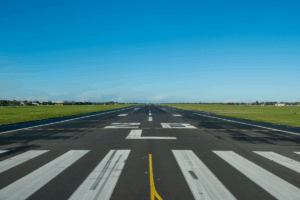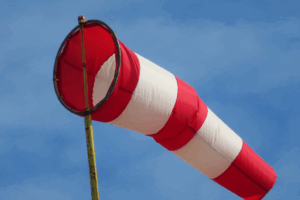Runway safety is non-negotiable at every airport, regardless of size, capacity, or location. Operational efficiency and cost-effectiveness are also critical elements of running an airport with sustainable profitability.
However, if any of the elements begin to slip due to aging, deterioration, or outdated runway lighting equipment, retrofitting your legacy parts and equipment goes from mere maintenance to becoming a strategic investment in performance, compliance, and long-term cost control.
What Are The Signs That A Legacy Equipment Retrofit May Be Necessary?
Your airport runway lights are essential to running a safe, efficient operation. Even if you maintain them regularly, there will be a time when retrofitting your equipment will be required to maintain high safety standards.
Here are a few of the warning signs to watch out for:
Higher Energy Consumption
Legacy equipment often uses significantly more power than modern LED-based systems, especially as they age and need to work harder to function.
Beams Have Become Weaker
Pilots may have trouble seeing the runway on approach, especially in low visibility conditions such as rain, snow, fog, or at night, if the diminished beam from the older bulbs fails to cut through the horizon.
Increased Maintenance Needs
Older runway lights, especially those using metal halide or incandescent lamps, will burn out quickly and generate intense heat, necessitating more frequent maintenance visits from your technical teams.
Parts Are Becoming Harder To Source
Decades-old gearboxes, belt drives, and other legacy equipment are becoming harder to find, costing you time and money to source and ship them to your location.
Ignoring these warning signs can lead to increased maintenance and energy costs that exceed the investment in a retrofit, while also affecting your compliance with evolving standards from governing bodies such as the FAA and ICAO.
5 Reasons To Retrofit Your Airport Runway’s Legacy Equipment
Here are the top five reasons to start your retrofit project sooner rather than later:
- Longer Equipment Life
Retrofitting your existing lamp system with LED technology extends its service life to 50,000 hours or more, several times that of traditional fixtures. This longevity translates to fewer lamp changes, less system downtime for maintenance, and significantly lower replacement costs over time.
- Better Energy Efficiency
Traditional fixtures consume up to 70 percent more power than LED systems, significantly impacting your operating budget. An LED retrofit pays for itself over time, especially at airports with thousands of lamps across their airfields. These gains are also compounded by lower heat generation, as LEDs emit less thermal energy than incandescent sources, easing the load on electrical components and cabling insulation.
- Reliability Under Any Conditions
Traditional halogen or incandescent systems are prone to filament failure and photometric degradation, particularly in extreme weather or high-vibration environments. LED fixtures, by comparison, provide consistent output and color performance over a wide operating range. Furthermore, modern LED lighting units can incorporate robust surge protection and hermetically sealed housings to withstand exposure to moisture, chemicals, and runway de-icing agents, enhancing consistent reliability for pilots, ground crews, and tower personnel.
- Easy Integration With Modern Control Systems
It can be challenging to integrate legacy systems with modern airport technology, such as an Airport Lighting Control and Monitoring System (ALCMS). Retrofitting with LEDs allows you to adopt an ALCMS, which can automate the dimming and brightening of the runway LED bulbs to match visibility conditions or air traffic requirements. LED-based systems can also integrate seamlessly with Automated Surface Detection Equipment (ASDE), which allows ground lights to respond intelligently to aircraft or vehicle movement on the airfield.
Más información: Mejorar el funcionamiento de los aeropuertos con soluciones de supervisión y control a distancia
- Keeps You Compliant With ICAO And FAA Standards
Upgrading lighting systems to technology that offers tighter photometric performance, better color uniformity, and improved environmental sealing is a critical factor for certification and inspection by relevant governing bodies.
Más información: Cumplimiento de la normativa y normalización de los equipos de iluminación y alimentación de los aeropuertos
Start Setting The Standard For Airport Safety And Efficiency
Our team maintains that airport lighting retrofitting is more of an investment in energy savings than a cost. As air traffic volumes increase and regulatory expectations tighten, airports that continue to rely on aging lighting infrastructure will face growing challenges that become increasingly difficult to overcome over time.
That’s why retrofitting is a sound strategy for airport operators who want to future-proof their infrastructure with advanced LED technology that saves money, boosts profits, and supports expansion opportunities.
When you’re ready to upgrade your runway lighting and electrical equipment, call the experts at Airport Lighting Company for reliable, customized recommendations, high-quality components, and exceptional customer service.
Call Airport Lighting Company For The Latest In Airport Lighting Technology
El equipo Airport Lighting Company es a su disposición para responder a sus preguntas sobre cómo nuestros productos tecnológicos pueden ayudarle a mejorar la seguridad, fiabilidad y eficacia de sus pistas. Llame al 315-682-6460 para obtener un servicio rápido y amable en el que puede confiar.


